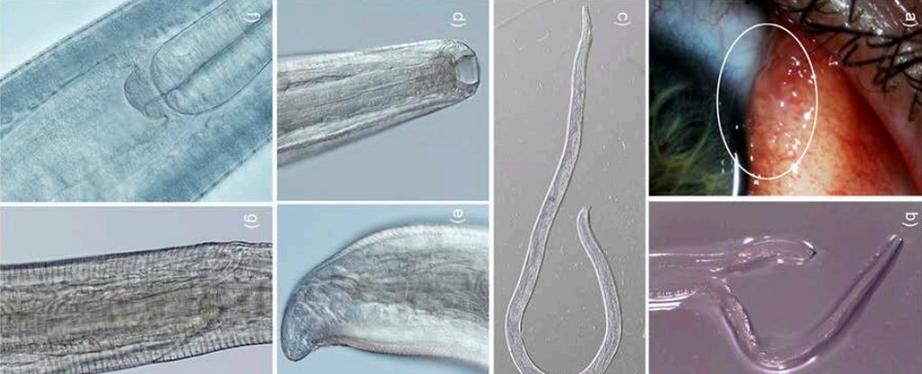A woman had 14 worms in her eye and doctors didn't even know it was possible
This species doesn't usually attack humans.
A parasitic eye worm called Thelazia gulosa is pretty common in the northern US and southern Canada - at least in cows.
Now, for the first time, it's been observed jumping over to humans, infecting the eye of an Oregon woman.
The 26-year old patient reported feeling an irritation in her left eye, before removing the first worm eight days later.
Over a 20-day period, 14 worms less than 13 millimetres (half an inch) in length had to be removed from her conjunctiva and the surface of her eyeball.
Typically, the eye worms are spread between cattle by flies that feed on the fluid that lubricates the eyeball.
"Cases of eye worm parasitic infections are rare in the USA, and this case turned out to be a species of the Thelazia that had never been reported in humans," said case report lead author Richard Bradbury of the CDC's Division of Parasitic Diseases and Malaria.
"Previously, it was thought that there were only two different species of these (Thelazia) eye worms that infected humans worldwide. Now, we have to add Thelazia gulosa, a third one to the list."
The other two types of eye worms that infect humans are Thelazia callipaeda, found in Asia, and Thelazia californiensis, found across Asia and Europe.
Previously, only 10 cases of thelaziasis, the infection caused by Thelazia, had been reported in the US, and all had ended up being the result of Thelazia californiensis worms.
More commonly, thelaziasis occurs in animals such as cats, dogs and foxes, spread by different types of flies. If humans do end up infected, they tend to be the very young and the very old - possibly, the doctors noted, because they can't as easily brush flies away from their faces.
Typically, patients infected with these parasitic eye worms report feeling similarly to the 26-year-old patient - eye irritation, and the sensation of a foreign body in the eye.
The doctors believe she may have contracted the worms while practising horseback riding in a region of Oregon where cattle farming is common.
"We immediately thought it could be Thelazia californiensis because that is the only species that was known to infect humans in the US," Bradbury said.
"It was only after we looked more carefully that we realized some differences in anatomy that meant it could not be T. californiensis. We had to go back to papers published in German back in 1928 to help identify this worm as Thelazia gulosa."
Thankfully, it's pretty easy to get rid of these eye worms, since they stay on the surface of the eye and the conjunctiva, but that doesn't mean the worms aren't dangerous.
If the worms move across the surface of the eye, they can scar the cornea and even cause blindness, the doctors noted in the case report.
The worms were all removed manually - 6 by doctors, and the remaining 8 by the patient herself, over the space of several days.
Since the 14th worm left the patient's eye, she has experienced no further symptoms.
The case report has been published in The American Journal of Tropical Medicine and Hygiene.

